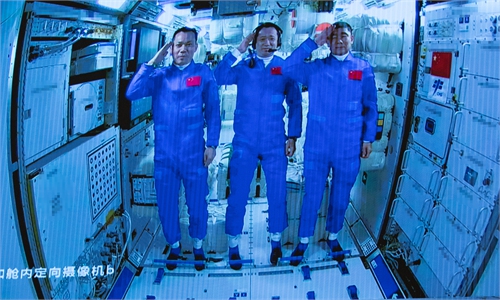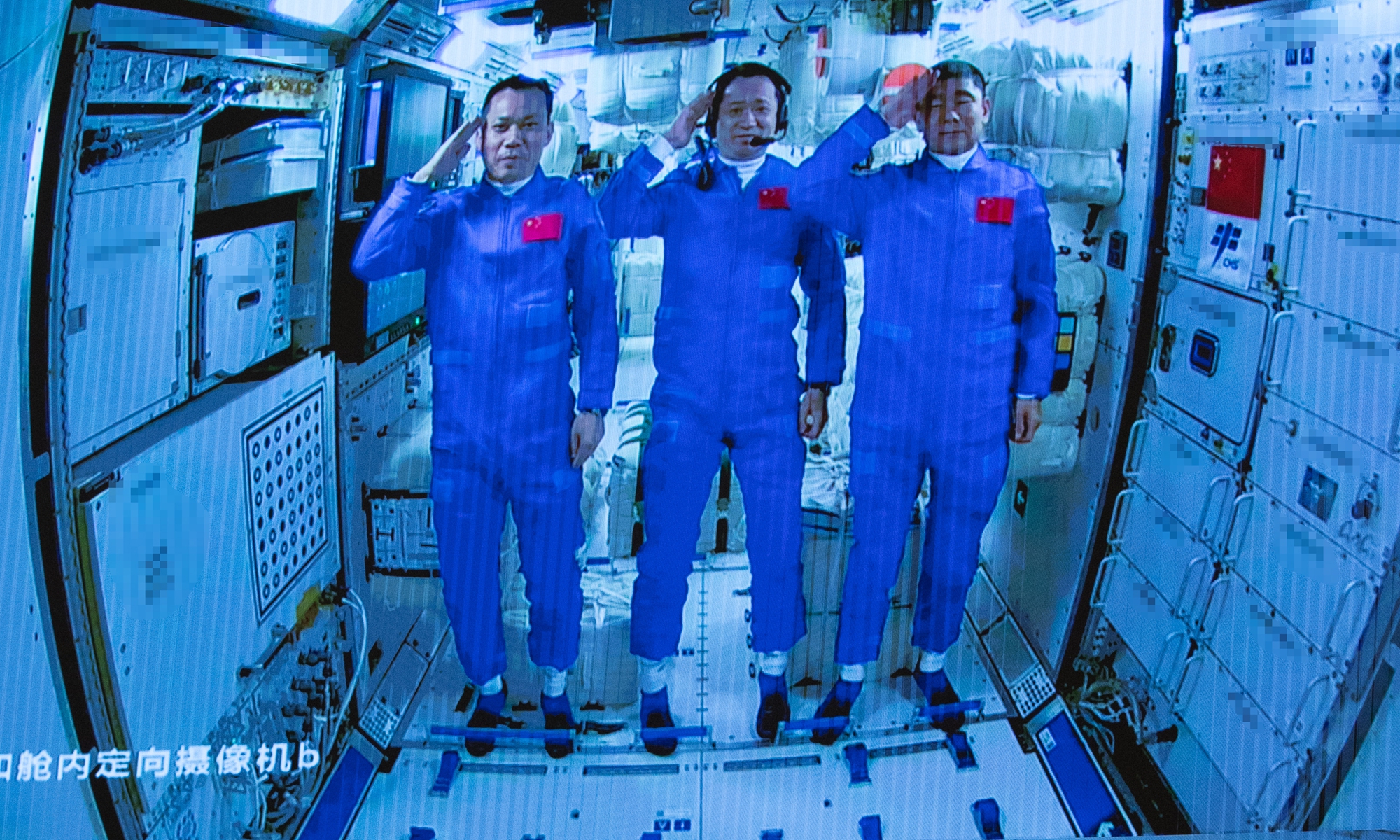
Three Shenzhou-12 astronauts, Tang Hongbo, Nie Haisheng and Liu Boming (from left) salute after entering the Tianhe core module on Thursday. Photo: Xinhua
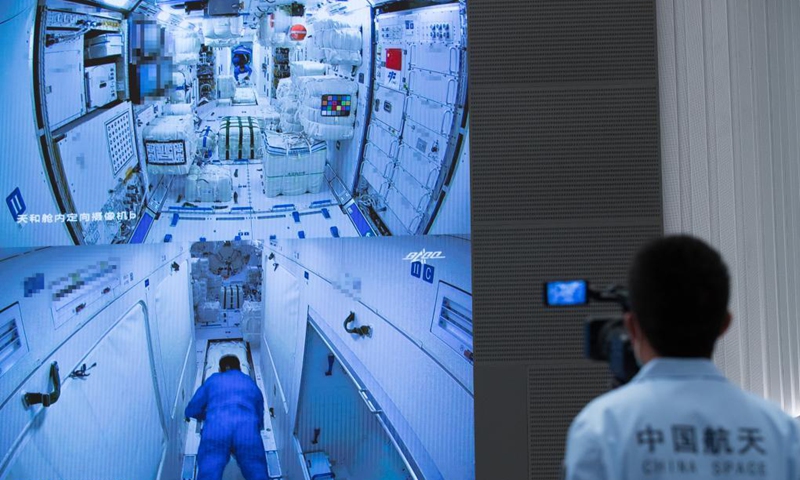
A staff member takes videos of the screen image showing three Chinese astronauts onboard the Shenzhou-12 spaceship entering the space station core module Tianhe at Beijing Aerospace Control Center in Beijing, capital of China, June 17, 2021.
The three Chinese astronauts' space trip and lives in the Tianhe core module of China's own space station have become "the topic" on Chinese social media with the public discussing every detail of the mission, expressing their excitement and pride for their nation.
The Thursday mission, receiving domestic praise and congratulations from the world, comes as a gift for the 100th anniversary of the Communist Party of China, and added national confidence in a path to abundance, strength and national rejuvenation.
The top search phrase on Sina Weibo on Friday afternoon gave a hint on how people passionately discuss everything related to the Shenzhou-12 launch and Tianhe module - 57-year old Nie Haisheng, the oldest of the crew, dyed his hair black before the mission.
Netizens also expressed great interest in the extensive menu on the space station, wondered whether vegetables will be planted - a typical Chinese practice at their residence - and said jokingly that the first group were homebuilders as they need to turn more than 1,000 screws to prepare the space station for succeeding crews.
People are also amazed at the 10-meter-long robotic arm that can assist astronauts' long duration operating outside the cabin, and the QR code system that enables the crew members to quickly obtain the location and further information of specific goods.
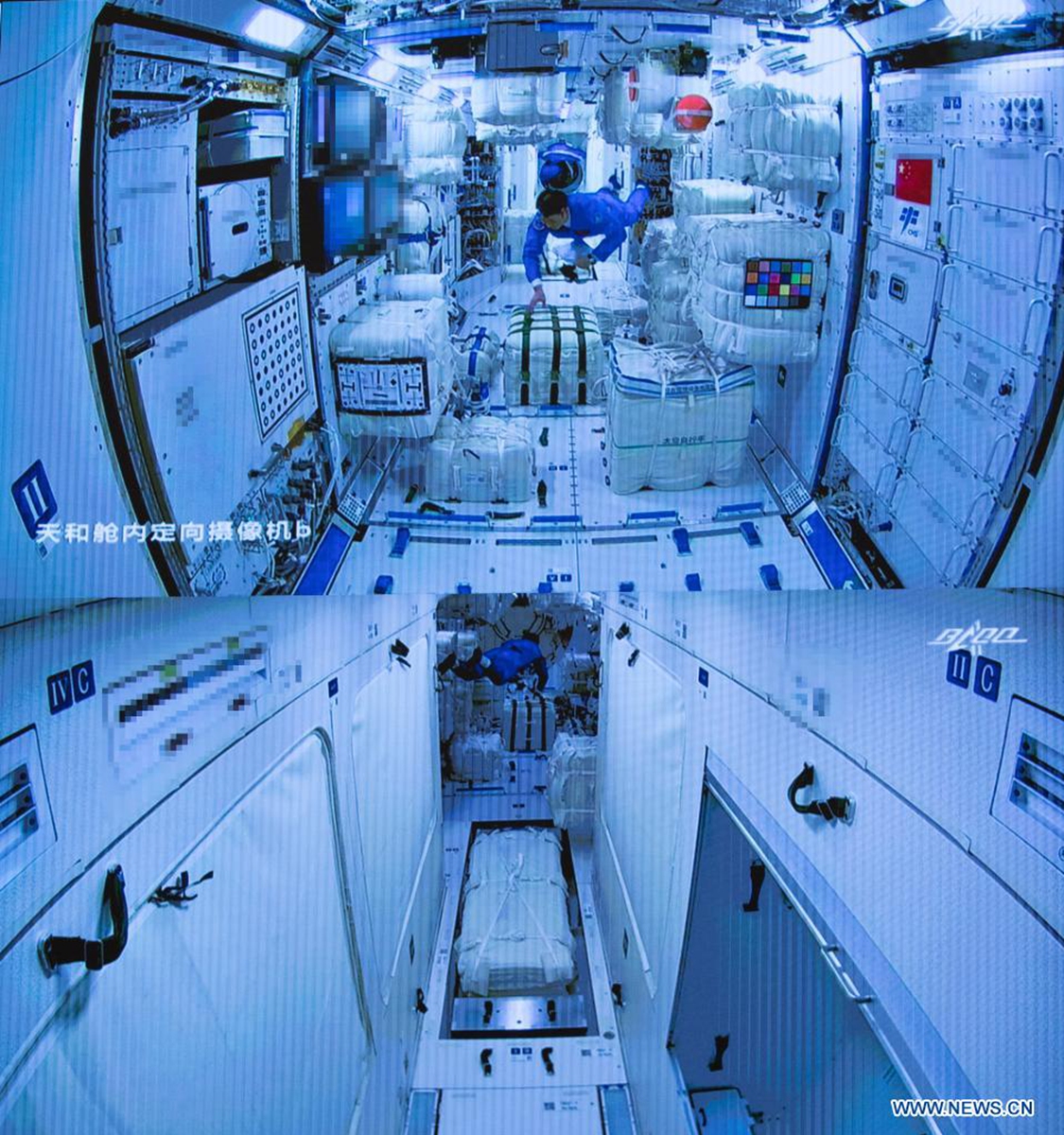
Screen image captured at Beijing Aerospace Control Center in Beijing, capital of China, June 17, 2021 shows three Chinese astronauts onboard the Shenzhou-12 spaceship entering the space station core module Tianhe.
Yang Liwei, China's first astronaut expressed his "jealousy" over his fellows' spacious new home. Also director of the China Manned Space Engineering Office, Yang went into space in the Shenzhou-5 craft on October 15, 2003.
As netizens jokingly said the Tianhe is a three-bedroom luxury apartment, Yang saw progress not only in the scale of the module but also equipment within it.
How the three astronauts will eat, live and do experiments in space in the next three months is in sharp contrast to the Shenzhou-5 18 years ago, when Yang crammed in a small module, and some people traced the aerospace dream back to Dongfanghong-1, China's first satellite, in 1970, and even to the 1950s when China made its first plane.
"Since the Party can lead China out of imperial suppression since the 1920s, it can lead China on a path of independence and growth, and lead the way to national rejuvenation," said a Weibo user.
Younger generation learned about the path from history books, but they have vivid memories on the launch of Shenzhou-5.
"Yang Liwei was so brave when he was the first Chinese to ever enter space, on his own...but now our astronauts have a 'luxury house' and abundant meals, they feel at home. What a huge progress!" said a netizen on Weibo.
"I was in my third year of elementary school when Shenzhou-5 was launched and the entire school watched the live broadcast; I can recall that excitement, which is the same as today," said another Weibo user.
For children who did not witness the previous milestones of manned space mission and walking in space (Shenzhou-7 in 2008), the Thursday mission was a fresh yet unforgettable experience.
"I am so moved," a boy cried upon seeing the launch of Shenzhou-12 livestreamed in a kindergarten in Shanghai, a viral video shows. Wishing for success may sow the seed to develop China's aerospace industry in each child's heart.
East China Normal University in Shanghai held the commencement ceremony on Thursday, where the launch of Shenzhou-12 was livestreamed to graduating students. "The graduates of 2021 will never forget their commencement that overlapped such a great space mission!" a student of the school commented.
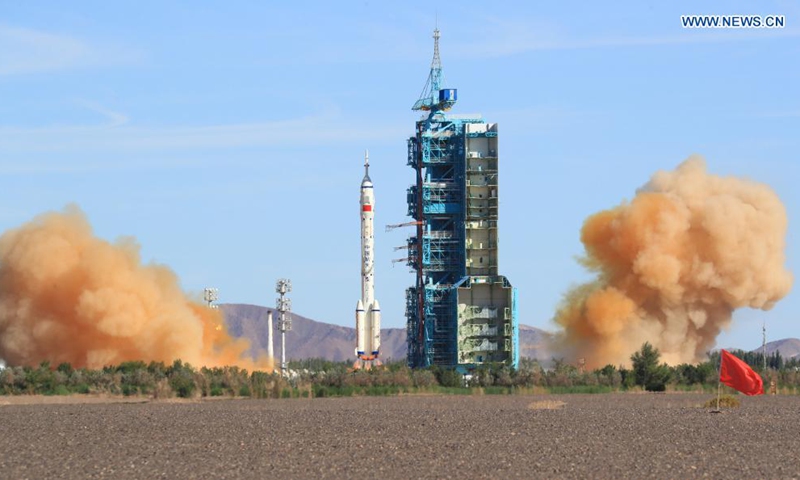
The crewed spacecraft Shenzhou-12, atop a Long March-2F carrier rocket, is launched from the Jiuquan Satellite Launch Center in northwest China's Gobi Desert, June 17, 2021. (Xinhua/Ju Zhenhua)
The mission also caught the attention of the world and made headlines of major news outlets.Russian space agency Roscosmos, European Space Agency (ESA) and NASA all sent congratulations over the mission. The Roscosmos congratulated their Chinese peers and said the two countries will do more joint work.
The ESA in its tweet used the word "taikonauts," a combination of taikong, the Chinese word for space, and astronaut. Many netizens saw the word as a sign of respect to Chinese progress in space science.
Elon Musk, a well-known US technology entrepreneur and CEO of SpaceX, called the mission "a great achievement" in his congratulatory comment.
World recognition of China as a major power in space struck a chord among Chinese, who recalled the country's breaking technological block-off and becoming a major player not only in aerospace but other fields including nuclear and telecommunications as well.
The pattern taught the US a lesson that technological block-offs cannot stop China's steps in progress. The US should reflect on its current China policy -- containing, suppressing and decoupling, Wu Xinbo, director of the Center for American Studies at Fudan University in Shanghai, told the Global Times.
The US could find a win-win situation not only in the space sector, but also in other domains if it works with China, or it will suffer the losses possibly only slightly slowing China's pace, Wu noted.
The International Space Station has housed more than 200 astronauts from 19 different countries, but not China, due to US political objections and legislative restrictions, which further drove China's urgency to build a station of its own.
Observers stressed the mankind advances in cutting-edge technologies through cooperation and vicious competition jeopardizes the momentum.
Right ahead of the Shenzhou-12 launch, China, Russia jointly released a road map on lunar station program, emphasizing its openness to international partners.
The two sides discussed the definition, scientific objectives, implementation approaches, cooperation domains and cooperation opportunity proposals of ILRS to all interested countries, international organizations and international partners in the phases of the planning, demonstration, design, development, implementation, operation and scientific research of the International Lunar Research Station project, according to a statement China National Space Agency sent to the Global Times on Wednesday.
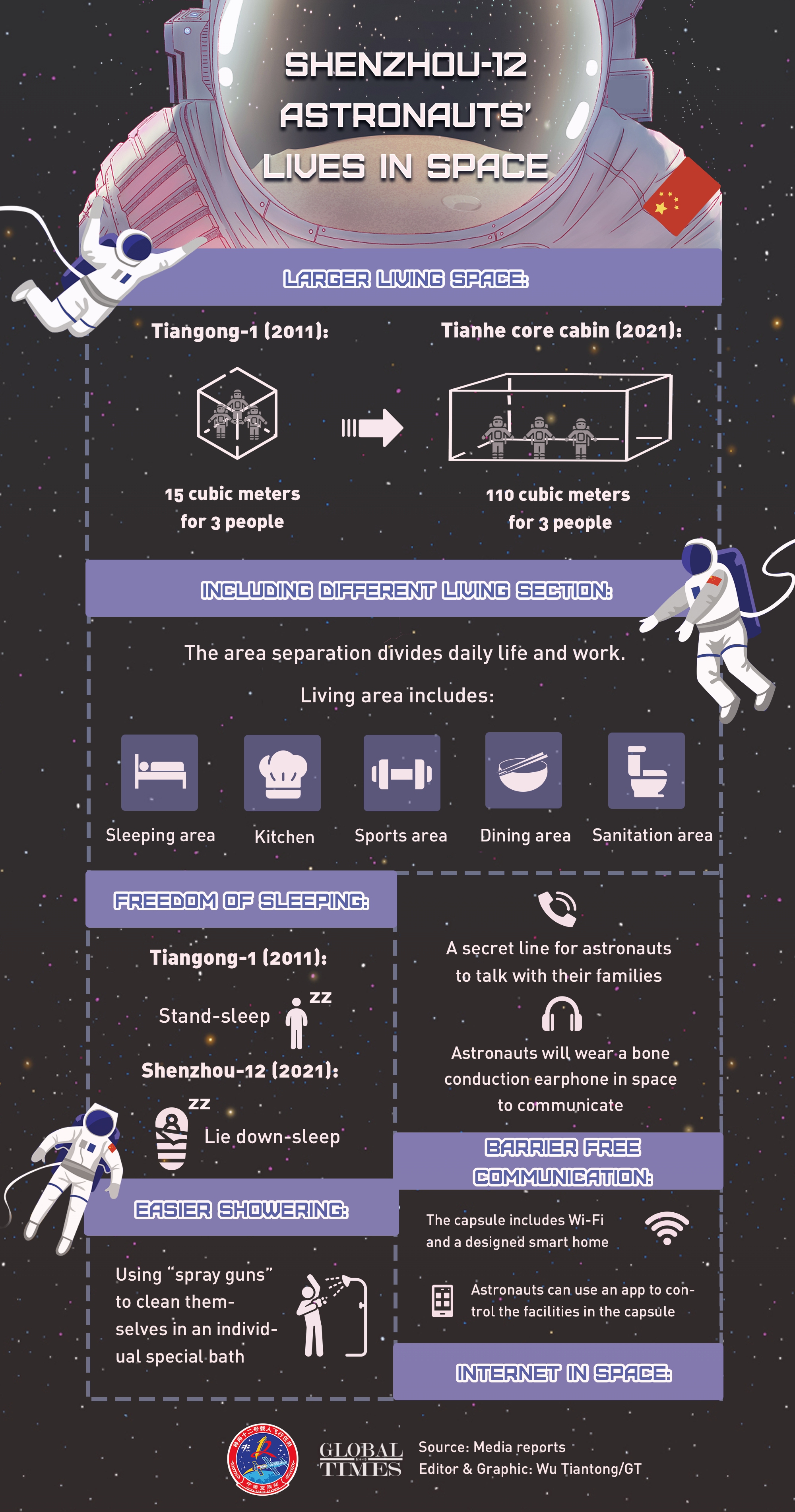
Shenzhou-12 astronauts' lives in space Infographic: Wu Tiantong/GT

